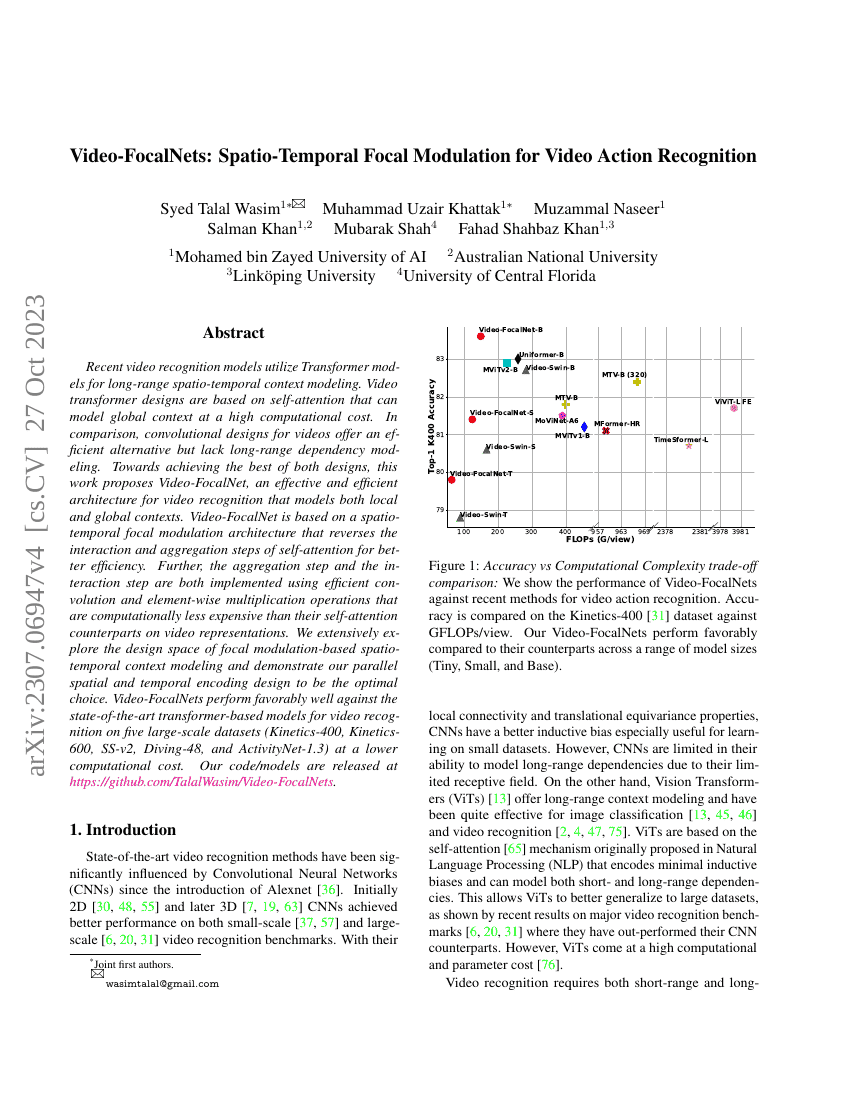Command Palette
Search for a command to run...
Video-FocalNets: Spatio-Temporal Focal Modulation for Video Action Recognition
Syed Talal Wasim Muhammad Uzair Khattak Muzammal Naseer Salman Khan Mubarak Shah Fahad Shahbaz Khan

Abstract
Recent video recognition models utilize Transformer models for long-range spatio-temporal context modeling. Video transformer designs are based on self-attention that can model global context at a high computational cost. In comparison, convolutional designs for videos offer an efficient alternative but lack long-range dependency modeling. Towards achieving the best of both designs, this work proposes Video-FocalNet, an effective and efficient architecture for video recognition that models both local and global contexts. Video-FocalNet is based on a spatio-temporal focal modulation architecture that reverses the interaction and aggregation steps of self-attention for better efficiency. Further, the aggregation step and the interaction step are both implemented using efficient convolution and element-wise multiplication operations that are computationally less expensive than their self-attention counterparts on video representations. We extensively explore the design space of focal modulation-based spatio-temporal context modeling and demonstrate our parallel spatial and temporal encoding design to be the optimal choice. Video-FocalNets perform favorably well against the state-of-the-art transformer-based models for video recognition on five large-scale datasets (Kinetics-400, Kinetics-600, SS-v2, Diving-48, and ActivityNet-1.3) at a lower computational cost. Our code/models are released at https://github.com/TalalWasim/Video-FocalNets.
Code Repositories
Benchmarks
| Benchmark | Methodology | Metrics |
|---|---|---|
| action-recognition-on-diving-48 | Video-FocalNet-B | Accuracy: 90.8 |
Build AI with AI
From idea to launch — accelerate your AI development with free AI co-coding, out-of-the-box environment and best price of GPUs.